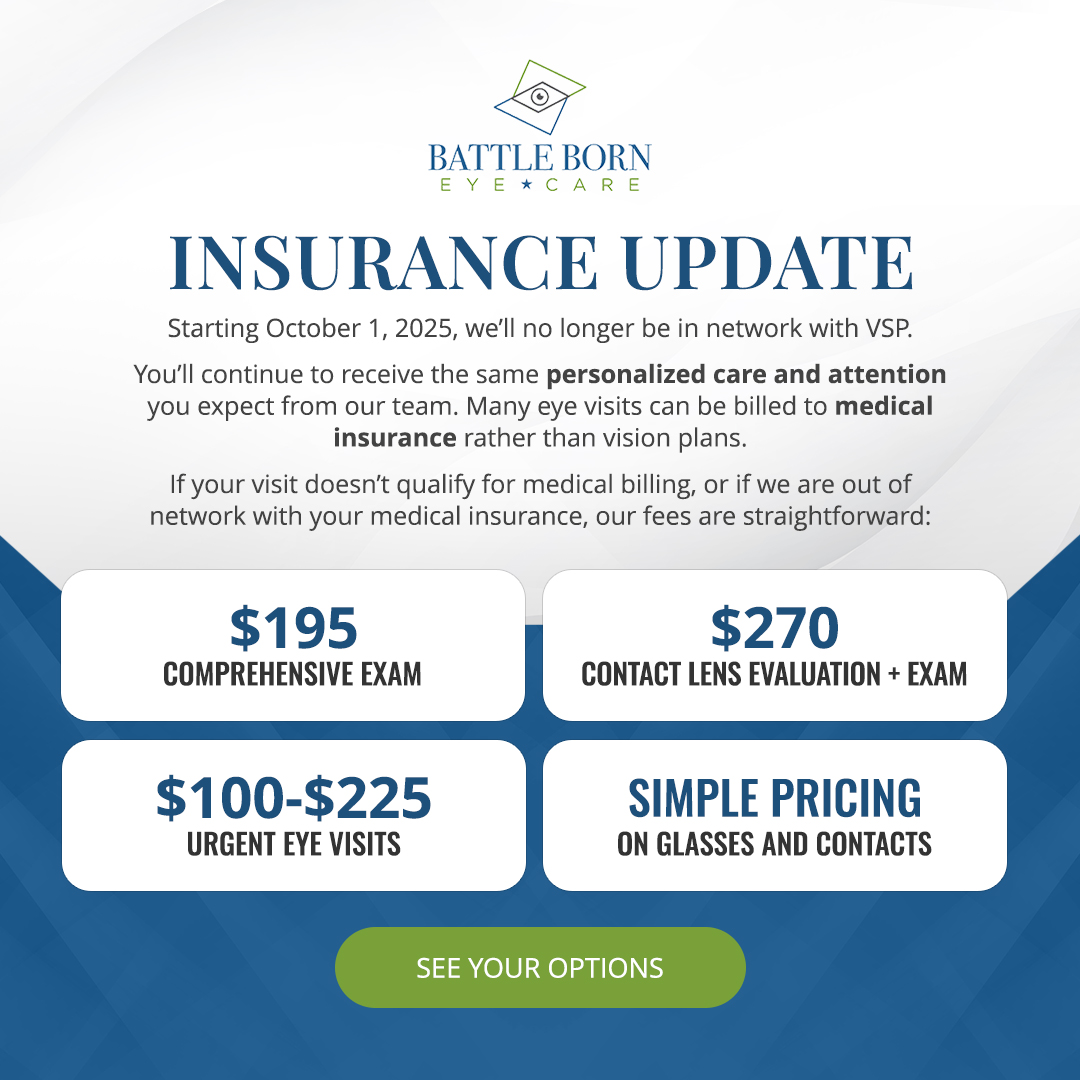Battle Born Eye Care Blog
Learn more about optometry care in our blog!

You may be suffering from eye misalignment and not realize it. The condition results in binocular vision dysfunction (BVD).

Many people worldwide suffer from dry eye symptoms. They occur when the eyes cannot produce adequate or quality tears to lubricate and moisten your eye surface.

Nearsightedness, also known as myopia, is a widespread problem affecting various populations worldwide. The condition continues to grow as people spend more time indoors and do close work, like using their computers and reading. It can develop and lead to severe eye conditions like cataracts or glaucoma. It can also contribute to blindness if left untreated.

Schools conduct vision screening for students. However, these should not be a substitute for eye exams. Your child needs to go for eye exams from the time they are six months old. It ensures their eyes are developing at the proper pace. After the first visit, their doctor may recommend a checkup every year, at least for the first five years. After that, you can keep it to every two years.

Eyestrain has become a pervasive problem, especially with the increased use of digital devices. It leads to uncomfortable symptoms such as eye pain, headaches, and neck and shoulder pain. Neurolens® technology can help provide relief for the problem. The novel technology involves using prescription lenses with a contoured prism. The lenses help realign the eye, reducing trigeminal nerve pressure.

Have you been wearing eyeglasses for years and are thinking of switching to contacts? You may have just discovered that you have a refractive error and need corrective lenses. Whatever the reason, switching to contact lenses means you are joining millions of people who have chosen convenience.

Many people around the world choose to wear contact lenses to enhance their looks or correct their vision. However, a considerable percentage of them ignore or overlook the instructions concerning their proper care. Practicing bad habits and avoiding cleaning them often result in several issues. Some of them include infections and irritations of the eyes.

Millions of people see clearly by wearing contact lenses. Most of them switched from prescription eyeglasses to contacts due to comfort and convenience. But what happens if you have a condition hindering you from wearing conventional contact lenses? Fortunately, custom-fit, specialty contact lenses can help in such situations. Read on to learn who needs them.

There are times when you cannot wait until your next annual eye exam to see the doctor. These times require urgent eye care and could result in complications or vision loss if you do not get it. Pain is just one of the indicators of an eye emergency. There are many situations where pain does not present. How do you know that you need urgent eye care or an emergency eye doctor?

Myopia, also known as nearsightedness or short-sightedness, is a growing problem. One study predicts that it will affect nearly 50 percent of the global population by 2050. Usually, this condition begins in childhood. Some factors that can lead to myopia development include lifestyle, family history, or both.











